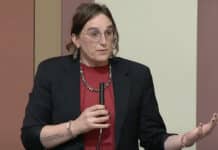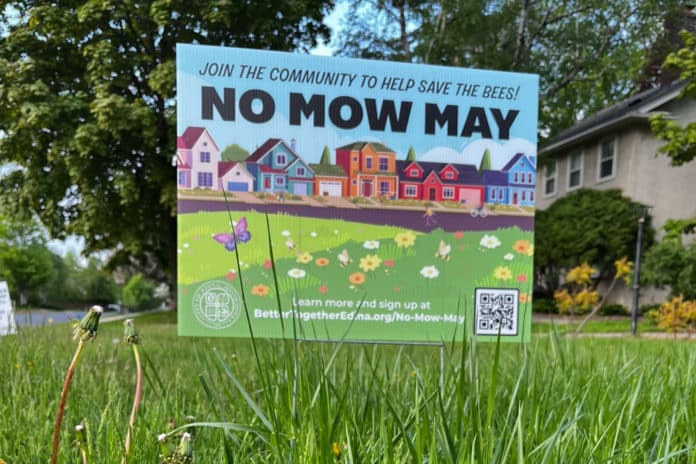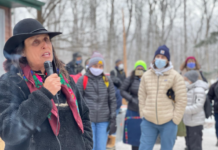Minnesotans are refraining from mowing their lawns this month to help save the bees, even though normal turf grass does not produce flowers and is therefore useless to pollinators.
West St. Paul, Edina, New Brighton, Vadnais Heights and Monticello residents are among those participating in “No Mow May,” letting their yards grow this month in the name of saving the bees. While bee populations are declining, a trend that can have critical negative impacts on the environment, experts do not agree that letting lawn grass grow is an effective means to bolster pollinator populations.
Meteorologist Laura Betker points out that if the lawn has been sprayed with insecticides or treated for weeds, letting the grass grow won’t help bees at all.
Other sources say letting grass grow too long is actually counter-productive. Grass long enough to shade the ground will hinder weeds and wildflowers from growing — the types of plants bees actually need.
A true “bee lawn” requires the lawn owner to mow the grass to one inch then plant seeds to grow flowering plants. Once the flowering plants have established themselves, then grass can be allowed to grow to a few inches tall, but should be kept in check relative to the flowers.
Additionally, lawn grass needs to have other “certain characteristics” to thrive as a bee lawn, which grasses like fine fescues have, University of Minnesota researchers say. Most lawns in Minnesota are “perennial ryegrass and tall fescue, but they are not recommended for bee lawns,” per the U of M.
Edina has almost 1,200 residents participating in No Mow May, and New Brighton has at least 250.
Some cities that are officially participating are not enforcing lawn care ordinances during this time, like Edina, and most cities taking part offer “free reusable yard signs” for residents to let their neighbors know why their lawns are not maintained.
West St. Paul ran out of its yard signs due to “overwhelming participation” in the program, a city statement says.
“Water less, Save more, Help pollinators, Reduce emissions,” reads the yard signs.
Minneapolis and St. Paul are not officially participating, but residents in those cities can call the city and say they are participating in a “pollinator-friendly yard” if they receive a formal complaint from a neighbor, per Axios Twin Cities.
West St. Paul said that after June 1 ordinances will be enforced, so lawns must be mowed back to height requirements. New Brighton said it will give citizens until June 10 to get their lawns back in order.

















